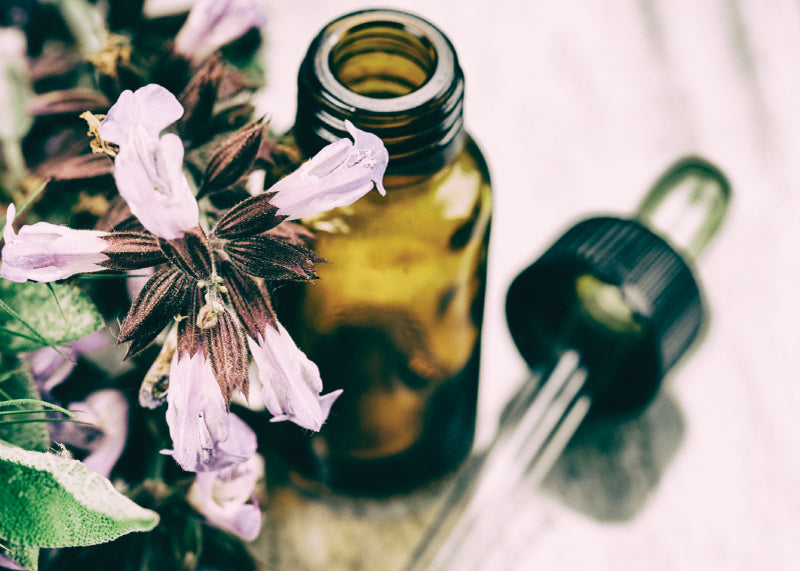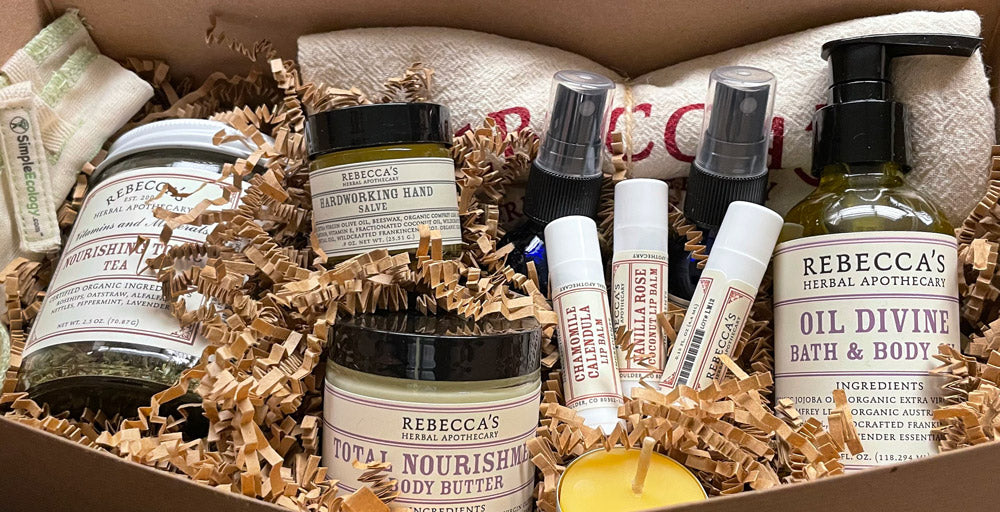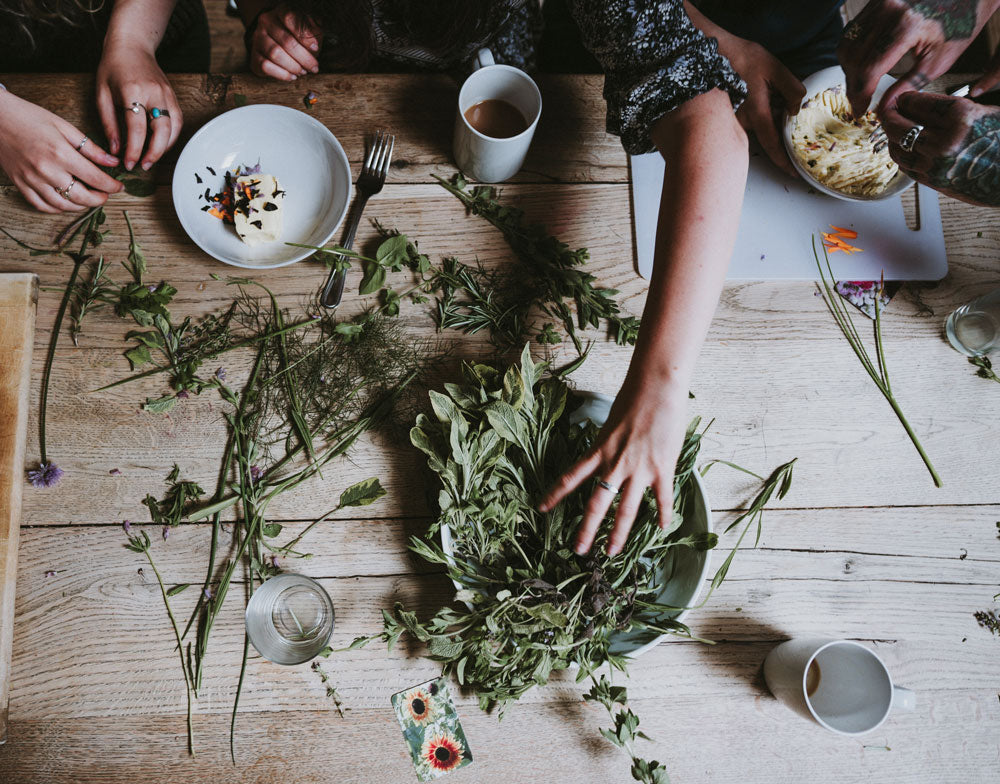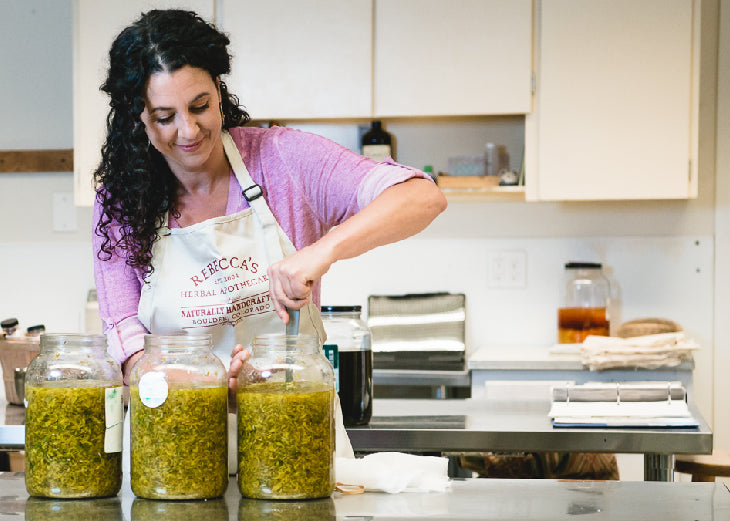Herb Article
Lady's Mantle
By Liz Phillbrick, certified clinical herbalist
 Common Name
Common Name
Lady's Mantle
Latin Name
Alchemilla vulgaris
Family
Rosaceae
Parts used
Leaves
Medicinal Properties
Summer has arrived and brought with it many of our herbal friends! As I walk into work every morning I pass a small patch of the beautiful herb, Lady's Mantle. Lady's Mantle has soft, pleated, cupped leaves that collect the morning's dew, preserving it throughout the day. When it flowers, sweet, pale yellow blossoms adorn the leaves. You'll often see this beauty as an ornamental in gardens.
The history of Lady's Mantle goes way back; it has been widely used as a folk medicine throughout Europe for many years. It acquired its Latin name Alchemilla (translated as "little alchemist" or "little magical one") because it was favored by Alchemists, who believed the plant to possess magical healing properties. Alchemists would collect the dew from the plant's leaves and use it in their formulas, believing that it could purify and cleanse any illness.
Folklore aside, Lady's Mantle has a wide variety of uses in herbal medicine. Most of its actions are due to the tannins and salicylates that are part of the plant's chemical makeup. The tannins contain astringent properties indicating the use of Lady's Mantle in conditions requiring toning of the tissues — diarrhea, hemorrhoids, ulcers, organ prolapse, hernias, sores and wounds. These astringent tannins have also historically been used to alleviate "oozing" infections like conjunctivitis, pus filled wounds and ear infection. The salicylates in the plant have anti-inflammatory actions suggesting the plant's use in inflammatory conditions such as rashes, rheumatism, digestive discomfort and muscular pain. Lady's mantle has been traditionally used to mend and connect torn tissues making it specifically helpful in conditions such as torn eardrums, hernias, muscles, tooth extractions and general wounds. Lady's mantle is also thought to have some nervine properties and has been used by herbalists for insomnia & anxiety.
Although Lady's Mantle has a wide variety of uses, it has become a highly valued "women's herb" due to its wide application for numerous gynecological problems. It seems to have an affinity for the female reproductive organs, restoring tone and vitality to the uterus. Lady's Mantle has traditionally been used for issues associated with the reproductive system such as painful periods, irregularity, lack of bleeding, excessive bleeding, headache, uterine prolapse, abnormal and excessive vaginal discharge, vaginal infections, fibroids, endometriosis, infertility, post-partum disorders and hot flashes. As you can see, Lady's Mantle makes a great herbal ally for most women of any age!
Preparations & Applications
Lady's Mantle is traditionally prepared as a tincture and/or tea. To make a tea, pour one cup of just boiled water over one tablespoon of herb. Cover the tea and let it steep for 10-15 minutes. Strain and enjoy. A strong tea can also be used as an external wash or sitz bath.
Well Woman Tea
This tea provides gentle nourishment for a woman's cycle. It can be enjoyed hot or cold depending on your mood.
1 part Raspberry
1/2 part Lady's Mantle
1/2 part Linden
1/4 part Calendula
1/4 part Red Clover
1/4 part Burdock
A Touch of Rose Petals
Resources
Herbal Healing for Women by Rosemary Gladstar
Women, Hormones & the Menstrual Cycle by Ruth Trickey
The Earthwise Herbal, A Complete Guide to Old World Medicinal Plants by Mathew Wood
Medical Herbalism by David Hoffman
 Common Name
Common Name Lady's Mantle
Latin Name
Alchemilla vulgaris
Family
Rosaceae
Parts used
Leaves
Medicinal Properties
Summer has arrived and brought with it many of our herbal friends! As I walk into work every morning I pass a small patch of the beautiful herb, Lady's Mantle. Lady's Mantle has soft, pleated, cupped leaves that collect the morning's dew, preserving it throughout the day. When it flowers, sweet, pale yellow blossoms adorn the leaves. You'll often see this beauty as an ornamental in gardens.
The history of Lady's Mantle goes way back; it has been widely used as a folk medicine throughout Europe for many years. It acquired its Latin name Alchemilla (translated as "little alchemist" or "little magical one") because it was favored by Alchemists, who believed the plant to possess magical healing properties. Alchemists would collect the dew from the plant's leaves and use it in their formulas, believing that it could purify and cleanse any illness.
Folklore aside, Lady's Mantle has a wide variety of uses in herbal medicine. Most of its actions are due to the tannins and salicylates that are part of the plant's chemical makeup. The tannins contain astringent properties indicating the use of Lady's Mantle in conditions requiring toning of the tissues — diarrhea, hemorrhoids, ulcers, organ prolapse, hernias, sores and wounds. These astringent tannins have also historically been used to alleviate "oozing" infections like conjunctivitis, pus filled wounds and ear infection. The salicylates in the plant have anti-inflammatory actions suggesting the plant's use in inflammatory conditions such as rashes, rheumatism, digestive discomfort and muscular pain. Lady's mantle has been traditionally used to mend and connect torn tissues making it specifically helpful in conditions such as torn eardrums, hernias, muscles, tooth extractions and general wounds. Lady's mantle is also thought to have some nervine properties and has been used by herbalists for insomnia & anxiety.
Although Lady's Mantle has a wide variety of uses, it has become a highly valued "women's herb" due to its wide application for numerous gynecological problems. It seems to have an affinity for the female reproductive organs, restoring tone and vitality to the uterus. Lady's Mantle has traditionally been used for issues associated with the reproductive system such as painful periods, irregularity, lack of bleeding, excessive bleeding, headache, uterine prolapse, abnormal and excessive vaginal discharge, vaginal infections, fibroids, endometriosis, infertility, post-partum disorders and hot flashes. As you can see, Lady's Mantle makes a great herbal ally for most women of any age!
Preparations & Applications
Lady's Mantle is traditionally prepared as a tincture and/or tea. To make a tea, pour one cup of just boiled water over one tablespoon of herb. Cover the tea and let it steep for 10-15 minutes. Strain and enjoy. A strong tea can also be used as an external wash or sitz bath.
Well Woman Tea
This tea provides gentle nourishment for a woman's cycle. It can be enjoyed hot or cold depending on your mood.
1 part Raspberry
1/2 part Lady's Mantle
1/2 part Linden
1/4 part Calendula
1/4 part Red Clover
1/4 part Burdock
A Touch of Rose Petals
Resources
Herbal Healing for Women by Rosemary Gladstar
Women, Hormones & the Menstrual Cycle by Ruth Trickey
The Earthwise Herbal, A Complete Guide to Old World Medicinal Plants by Mathew Wood
Medical Herbalism by David Hoffman




